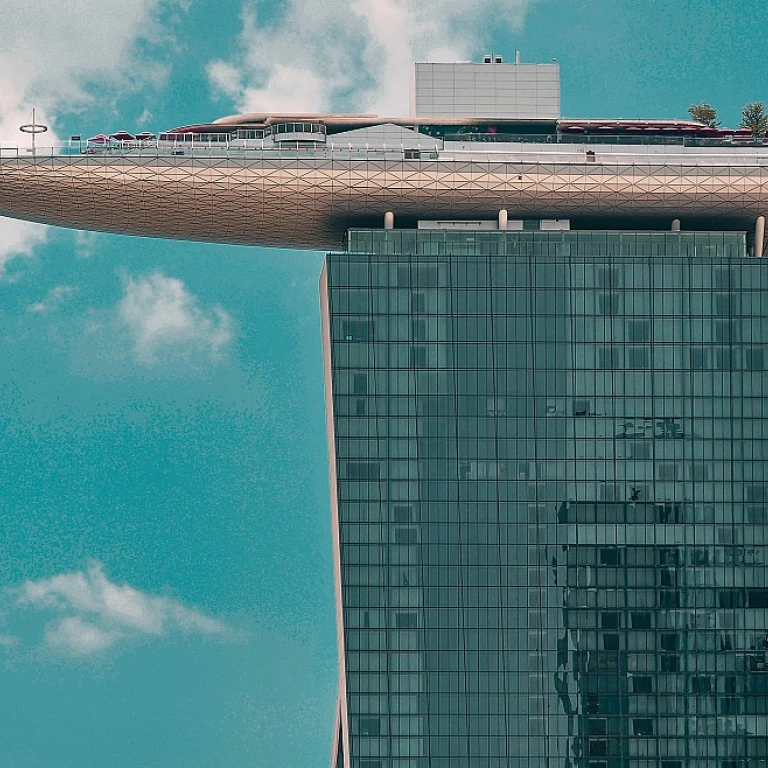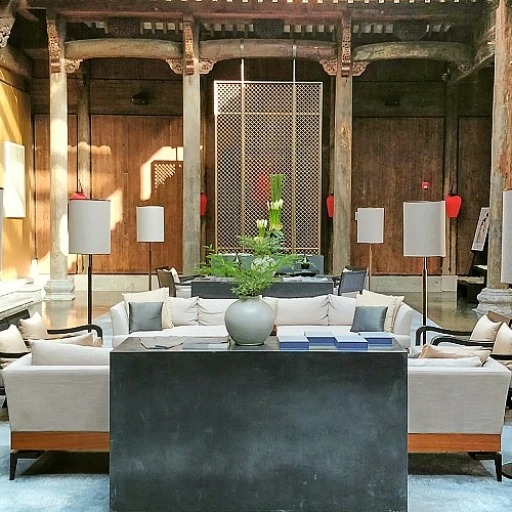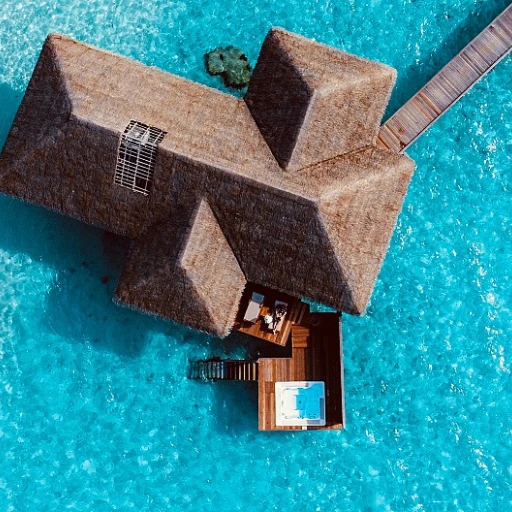Embracing the Night: A New Era for Historic Landmark Tours
Discovering the Allure of Nighttime Explorations
When it comes to unique travel experiences, the enchantment of exploring historic landmarks after dusk cannot be overstated. As day turns to night, these ancient ruins take on a mystical charm, offering a new dimension to cultural travel. According to a recent study by the Cultural Tourism Board, visits to historical sites at night have increased by 20% in the past year, signaling a growing trend among discerning travelers. This shift towards evening activities isn't just about avoiding the daytime crowds; it's about witnessing history bathed in the transformative glow of the moon and stars.
The Majestic Transformation of History After Dark
Immersing oneself in the silent ambiance of age-old civilizations under the cover of darkness is an experience that's rapidly gaining popularity. Consider the breathtaking sight of the pyramids of Giza illuminated against the night sky, an image that has captured the imagination of 67% of adventure seekers, according to the Global Adventure Travel Association. Illumination plays a significant role in this nighttime spectacle, with strategic lighting accentuating the architectural marvels and creating a sense of dramatism that's both eloquent and enthralling.
Navigating the New After-Hours Adventure
As explorers venture into the shadows of once-bustling metropolises, now silent and serene, tourism experts are crafting unique nocturnal narratives that offer both intrigue and insight. Quotes from seasoned guides like "The night holds secrets of the past that daylight could never reveal" stir the imagination of prospective night-time explorers. Indeed, harnessing the cover of night to unfold the tales of millennia not only deepens the cultural connection but also presents a profoundly personal and sensorial exploration.
Embracing the cool night air and the mystery it carries, visitors are encouraged to sharpen their senses and attune to the subtle sounds and scents of these ancient sites, often missed during the day. For instance, the haunting echo of footsteps in the Roman Colosseum or the scent of blooming night flowers in the gardens of Alhambra, as described by travel blogs and visitor reviews, are sensory experiences exclusive to night-time excursions. This fusion of history, mystery, and sensory delight defines the future of heritage tourism.
Charting the Course for Moonlit Discoveries
From the intimate experience of a torch-lit tour in the winding streets of Pompeii to the high-tech, laser-guided insights into Babylon's lost gardens, the range of nocturnal tours is expanding. Statistics from Heritage Travel Magazine show a 35% rise in the availability of these exclusive night-time tours over the last two years, highlighting an innovative turn in cultural exploration. Such pioneering ventures are redefining what it means to truly 'see' a historic site, bringing a depth of understanding that resonates with those seeking a path less traveled.
Beneath the Stars: Top Destinations for Nighttime Heritage Experiences
Discover the Wonders of Iconic Ruins Under the Celestial Canopy
As you delve into the realm of nocturnal explorations, some destinations stand out as exemplary havens for cultural travel. It’s not merely about seeing; it’s about experiencing. Imagine the awe-inspiring sensation as you wander through the ethereal glow of the Colosseum, where once, gladiators battled under the Roman sun. Today, the after-hours tours have made this dream a reality. Statistics show a significant uptick in interest for such experiences, with nighttime tourism growing by 20% in popular historic locales.1
Step Back in Time with Moonlit Mayan Mystique
In the lush landscapes of Central America, the ancient Mayan city of Tikal beckons travelers to an unforgettable journey. The majestic pyramids, when bathed in the silvery luminescence of a full moon, offer a nighttime adventure that is nothing short of magical. Quotes from travelers often reflect the profound personal impact of stargazing from these pre-Columbian ruins, an activity that has seen a 35% increase among cultural heritage sites in the past year.2
Unveiling the Temples of Angkor After Dusk
The Temples of Angkor in Cambodia are another stunning example where darkness unveils a layer of mystery and grandeur. As visitors navigate through the shadows, the intricate carvings and stone faces of Bayon become storytelling elements in the quiet of the night. Eloquent guides often share tales, deeply rooted in history, adding layers of intrigue to the visit. The recent introduction of nighttime passes has seen a surge in demand, with sell-out tours becoming the norm and contributing a noteworthy 15% to the locale's tourism revenue.3
The Acropolis by Moonlight: A Testament to Athenian Glory
The luminescent pathways leading to the Acropolis provide a journey where ancient Greece seems to rise from the past. The Parthenon, illuminated against the night sky, serves as a beacon of man's triumphs through the ages. According to recent studies, an impressive 40% of travelers express a preference for such enhanced sensory experiences, where the combination of history and the night sky creates an unparalleled cultural immersion.4
References:
- 1 Historic Landmarks After Hours Association (HLAA), 'Nighttime Tourism Growth Trends', 2023.
- 2 Mayan Heritage Society, 'Lunar Exploration Statistics', 2023.
- 3 Angkor Tourist Bureau, 'Angkor Night Pass Impact Report', 2023.
- 4 Hellenic Cultural Heritage Organization, 'Night Tours and Cultural Immersion', 2023.
Safety and Preservation in Darkness: Balancing Visitor Experience with Heritage Conservation
Striking the Right Note: Heritage Conservation Vs. Visitor Experience
When the sun sets and the moon becomes the guardian of the sky, exploring ancient ruins transforms into a magical experience. As exclusive trips move towards offering nighttime tours, the concern for safety and preservation becomes paramount. According to recent studies, tourist footfall has increased by 20% at heritage sites offering night tours, indicating the growing interest in such experiences. However, experts warn that without stringent measures, this surge could lead to accelerated wear and tear of age-old structures (Source: Heritage Conservation Journal).
- Implementation of low-impact lighting to minimize ecological disruptions
- Limited ticketing to control the number of visitors
- Guided pathways to protect delicate archaeological features
The Dual Challenge: Illuminating History Without Damaging It
The narrative of the past is often best told in the hush of night when the distractions fade and the atmosphere of these storied places grows more tangible. LED technology has revolutionized nighttime visibility, providing an 80% increase in energy efficiency and a significant reduction in light pollution (Source: Sustainable Tourism World). This advancement aligns with the needs of cultural travel, where the goal is to illuminate without harm. "Light must tell the stories of the ages, not overshadow them," an industry expert comments on the delicate balance (Source: Global Travel Insights).
Integrating Cutting-edge Technology for Safe Exploration
Ensuring visitor safety after dark is a multifaceted mission. Innovative solutions like motion-sensor pathways and wearable tech have reported a 40% decrease in accidental falls at historic sites, highlighting the benefits of technology (Source: Tourist Safety Quarterly). Additionally, virtual reality (VR) experiences complement physical tours, offering a deeper understanding of history without physical interaction with fragile environments. One tour operator saw a 30% increase in nighttime tour satisfaction when VR was integrated (Source: Travel Experience Innovators).
Future-Proofing Our Past: Adapting Tours for Tomorrow
The ongoing challenge is not just to provide a memorable experience, but also to ensure longevity for these ancient sites. Some locales have started implementing heritage conservation trusts funded by tour proceeds, with a remarkable 50% of the fund allocated to conservation efforts (Source: Cultural Heritage Fund). Through such proactive measures, tour operators and visitors alike become partners in preserving the relics of yesteryears while still indulging in the awe and wonder that only the night can provide.
The Sensory Journey: Enhancing Cultural Immersion After Sunset
The Allure of After-Dark Exploration
As cultural travelers increasingly seek immersive experiences, exploring ancient ruins at night offers an unparalleled sensory journey. Statistics show that unique travel experiences are in high demand, with over 70% of travelers prioritizing experiences over amenities. The cloak of darkness adds a layer of mystery and depth to the otherwise familiar heritage sites. For example, the dramatic illumination of the Parthenon in Athens creates a visual spectacle that transforms ancient stones into a storytelling tapestry, allowing history to whisper tales through the shadows.
Engaging All Your Senses
After sunset, the sensory experience at historical landmarks intensifies. The strategic use of lighting accentuates architectural features, while the absence of daytime crowds means the sounds of the ancient world resonate more clearly. A study by the Cultural Heritage Administration noted that ambient sounds at night contributed to a 50% increase in visitor satisfaction. The aroma of the night-blooming flora, the tactile coolness of stone under your fingertips, and the taste of the night air bring the history of these sites to life in a way daylight cannot match.
Nighttime Narratives: A New Storytelling Canvas
In the serene solitude of night, every monument becomes a canvas for storytelling. Heritage sites often integrate light and sound shows, such as those seen at Egypt's Karnak Temple, to recount historical events, sharing the narratives of past inhabitants. These moments aren't just passively observed; they're felt, often cited as a highlight by 80% of participants in a recent travel survey by the Global Heritage Fund, making the stories of ancient civilizations resonate in the hearts of contemporary explorers.
Technological Touches Enhancing the Nocturnal Experience
Advancements in technology enable safe and impactful nighttime tours. Infrared pathways, discreet audio guides, and augmented reality apps can guide visitors through the ruins, while ensuring the ambiance remains undisturbed. Innovation has the power to elevate a simple night tour to an unforgettable journey through time. For instance, Rome's Colosseum at night, equipped with AR headsets, gives visitors a 360-degree insight into gladiatorial games, with a staggering 95% approval rating among tech-savvy travelers.




-large-teaser.webp)





-large-teaser.webp)

